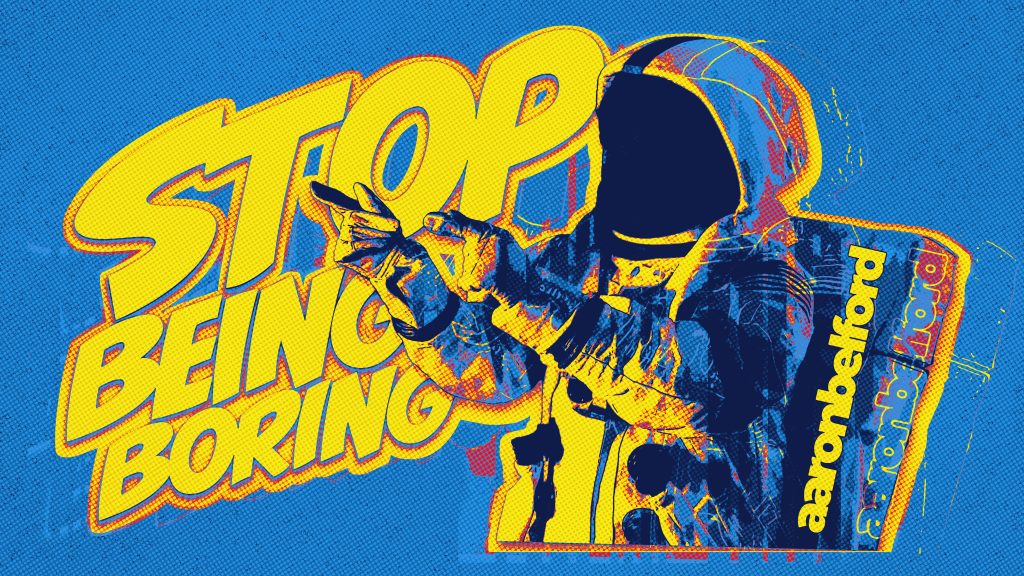Storytelling in Marketing isn’t dead. It’s just being thrown at everything, everywhere, all at once. In today’s rush to connect with audiences, marketers have made storytelling the Swiss Army knife of their toolbox. And while it’s powerful, treating it like a multi-tool does more harm than good. Storytelling isn’t for every situation. When used correctly, it’s a laser-focused strategy that creates deep, emotional connections and lasting brand loyalty. But when slapped onto campaigns where it doesn’t belong, it’s like trying to hammer in a nail with a wrench. Let’s break down where storytelling marketing thrives, where it fails, and how to wield it like the secret weapon it is.
Why Storytelling Hooks Us
Stories stick because our brains are wired to remember them. Humans have been telling stories since we could draw on cave walls. When you tell a story, you’re not just sharing information. You’re creating an emotional map your audience can follow. Here’s a personal example: I’m terrible with names but great with faces. To get around this, I create a quick story to tie a name to a face. Meet Mike? I imagine him holding a microphone on stage. That story sticks in my head far better than just hearing his name.
The same applies to marketing. Stories don’t just help people remember your brand. They make your brand matter. When done right, storytelling transforms your product or service from just another option into something unforgettable. But, and this is key, it has to be the right story in the proper context.
Where Storytelling Dominates
Storytelling marketing isn’t about shouting your brand’s name louder; it’s about giving your audience a reason to care. Here’s where it truly shines:
1. Purpose-Driven Campaigns
People want to feel like their purchases mean something. If your brand stands for something bigger than just making money, storytelling is how you make that resonate. Think about TOMS Shoes. Their “One for One” campaign didn’t just sell shoes, it sold the idea of helping children in need. Customers didn’t just buy footwear; they bought into a movement that made them feel like heroes.
2. High-Stakes Decisions
When someone’s about to spend serious cash, whether it’s on a car, a house, or enterprise software, storytelling seals the deal. Tesla doesn’t just sell electric cars; they sell a vision of a sustainable future. Their ads don’t bombard you with features; they show a lifestyle and a purpose, making customers feel like part of something revolutionary.
3. Building Long-Term Loyalty
If your goal is to keep customers coming back, storytelling is your glue. Peloton doesn’t just sell bikes; they sell transformation. Their marketing doesn’t just focus on burning calories, it highlights real people’s journeys, from struggles to breakthroughs. These stories create a sense of belonging and loyalty that’s hard to break.
4. Explaining the Complex
Some products or services are just hard to explain. Storytelling simplifies complexity by framing it in a way people can relate to. Think about Apple’s “Shot on iPhone” campaign. Instead of diving into camera specs, they tell stories of moments captured by real people. The result? Customers see the product as a tool for preserving life’s most precious memories.
Where Storytelling Falls Flat
Storytelling isn’t a cure-all. Here’s where it struggles:
- Fast-Paced Platforms: On TikTok or Instagram Stories, you’ve got seconds to grab attention. Long narratives don’t work here. Instead, vibe marketing, a quick hit of emotion wins the day.
- Everyday Products: Let’s be honest, nobody needs an emotional backstory for a pack of paper towels. For functional items, focus on clarity and practicality instead of crafting a dramatic arc.
- Forced Fits: When storytelling feels shoehorned, it backfires. Trying to add a narrative to something that doesn’t need it makes your brand look out of touch.
The Multi-Tool Problem
Here’s the hard truth: marketers have overused storytelling. Need engagement? Tell a story. Want to go viral? Tell a story. Rebranding? You guessed it, tell a story. But treating storytelling like a one-size-fits-all solution dilutes its power. It’s like using a multi-tool for every job. Sure, it’ll get the job done, but it’ll never be as effective as using the right tool for the right task.
Think about trying to cram a heartfelt narrative into a 15-second TikTok video. It’s awkward and out of place. Instead, save storytelling for channels where it can breathe, like blogs, YouTube videos, or email campaigns. Use vibe marketing to hook your audience, then draw them in deeper with a story.
How to Use Storytelling Like a Pro
To make storytelling work, you’ve got to be intentional. Here’s how:
- Start with Your Why: Take a page from Simon Sinek. Why does your brand exist? That’s your foundation.
- Choose the Right Channel: Storytelling needs room. Save it for platforms where people can engage deeply.
- Make It Personal: The best stories aren’t about your brand, they’re about your audience. Make them the hero.
- Pair It with Vibes: Use vibe marketing to grab attention, then storytelling to build connection.
Why This Matters To You
Storytelling isn’t dead, but it’s being misused. If you’re a young marketing professional or a hungry entrepreneur, here’s the deal: storytelling isn’t some magic solution that works for everything. Trying to slap it on every campaign makes it weak. But when you use it like the precision tool, it is. Targeted, intentional, and powerful. It becomes a game-changer. This isn’t about doing more; it’s about doing it right. If you want to stand out, don’t just tell a story. Tell the right story in the right place at the right time. That’s how you make your brand unforgettable.



